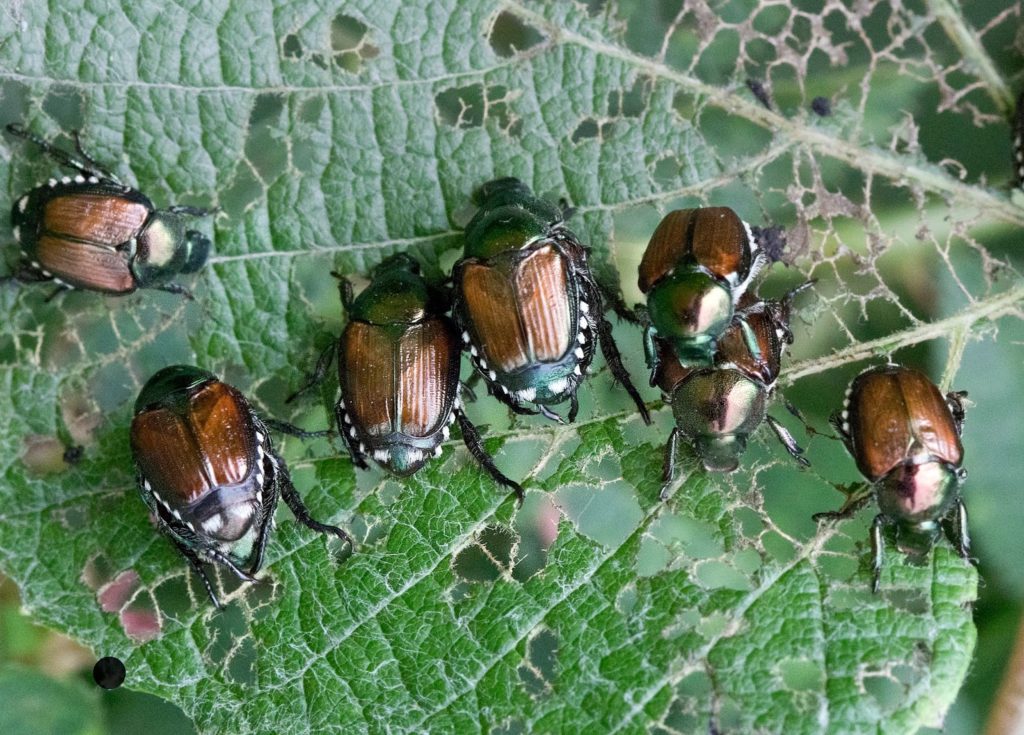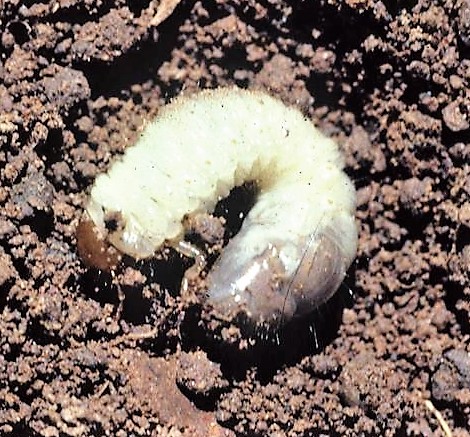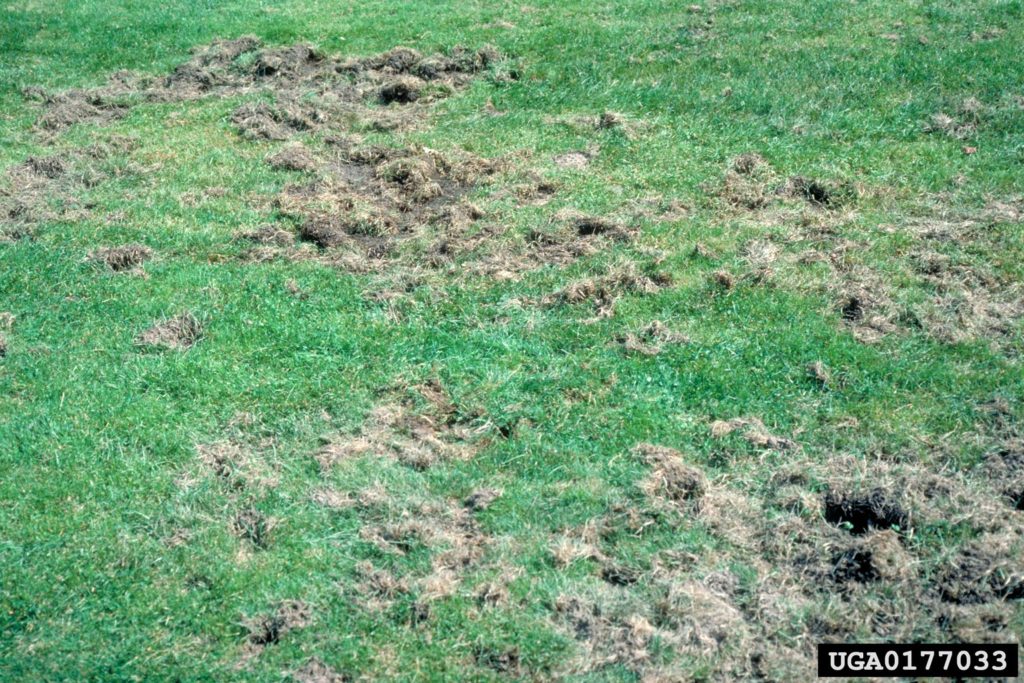
CC-BY 2.0 – C. Watts
The Japanese beetle (Popillia japonica) is an invasive pest that has been making steady inroads from the east since being first discovered in North America in 1916 (New Jersey) and in Canada in 1939 (Nova Scotia, Quebec). It has not reached the Prairies yet, but it is found in southern Ontario, Quebec, New Brunswick, Prince Edward Island and Nova Scotia. It has been detected in Vancouver,British Columbia and CFIA is leading a coordinated eradication program and has implemented efforts to prevent the pest’s spread outside Vancouver. The rest of British Columbia is still considered free of Japanese Beetle. In the USA, Minnesota and to the south and east is infested and North Dakota and south is partially infested. Montana and several other western USA states have implemented quarantine and phytosanitary regulations to protect their agriculture sector.
From late June to August, the adult Japanese beetle can attack the leaves and fruit of more than 300 species including ornamentals (birch, elm, maple, mountain ash, rose, zinnia), fruit and vegetables (apple, apricot, asparagus, blueberry, cherry, grape vine, plum, raspberry) and field crops (corn, soybean). The soil-dwelling larvae feed on roots of many species but prefer grass roots, damaging lawns, turf farms, golf courses and pastures.
The adult beetle is oval: 10-12 millimeters (0.5 inches) long by half as wide. It is metallic green with a brown head and metallic bronze wing coverings (elytra). Twelve white hair tufts are arranged along the outside edge of the back-half of the abdomen. Larvae are less than 25 millimetres (1 inch) at maturity and are a typical C-shaped white grub with a yellowish-brown head.
For more information see Canadian Food InspectionAgency (CFIA), United States Department of Agriculture (USDA) and Ontario Ministry of Agriculture, Food and Rural Affairs (OMAFRA) websites.
For information about previous featured insects, please visit our Insect of the Week page. For even more information on crop pests and their natural enemies, be sure to check out our newly updated Field Guide and Cutworm Guide, available for free download on our Insect Field Guide and Cutworm Field Guide pages.

CC-BY-NC 3.0 – Jim Baker, North Carolina University

CC-BY-NC 3.0 – MG Kelin, USDA-ARS
